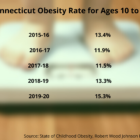Connecticut has saved an estimated $5.4 million in Medicare costs since 2010 by reducing re-hospitalizations of patients through a collaborative “communities of care” model in place in 14 regions around the state, including Hartford, New Haven, Milford, Meriden and Torrington. The estimate by Qualidigm, the state’s Medicare quality improvement organization, coincides with a study in the Journal of the American Medical Association (JAMA) that showed a marked decrease in both hospitalizations and readmissions of Medicare patients in regions where quality improvement organizations (QIOs) coordinate interventions that engage community partners to improve care after discharge. Hospital clinicians and their community partners in the 14 regions of Connecticut have stepped up “to find solutions (so that) patients are benefitting from enhanced coordination among providers across the care continuum,” said Dr. Mary Cooper, vice president and chief quality officer of the Connecticut Hospital Association, which is working with Qualidigm on the “communities of care” model. Readmitting Medicare patients to the hospital within a month of discharge is a frequent—and expensive — occurrence. A new report published this week by the Robert Wood Johnson Foundation shows that hospitals and their community allies made little progress from 2008 to 2010 at reducing readmissions for elderly patients.



